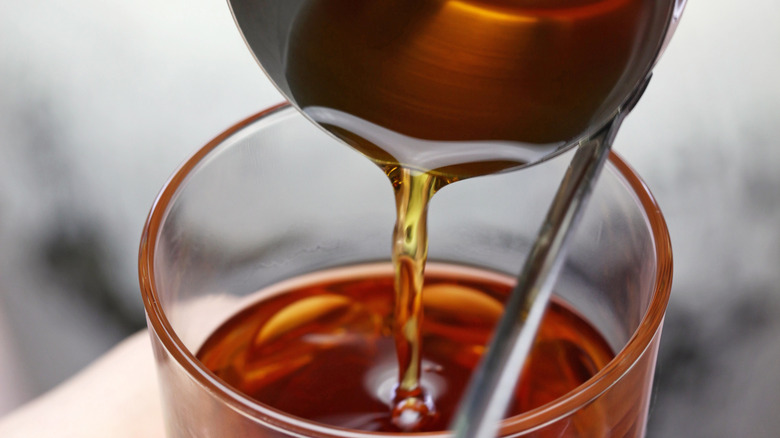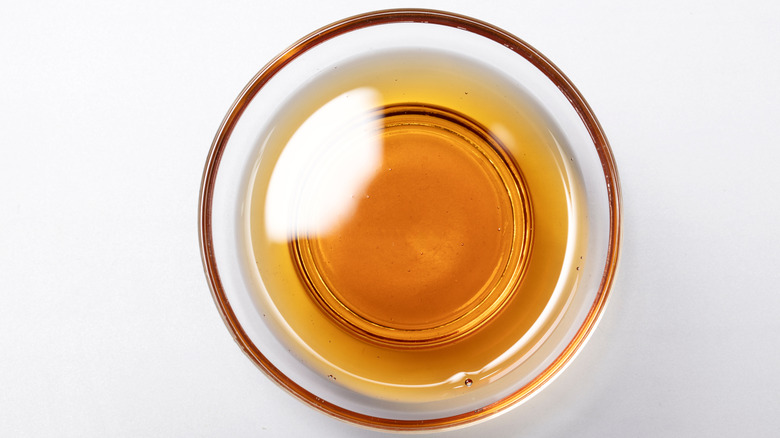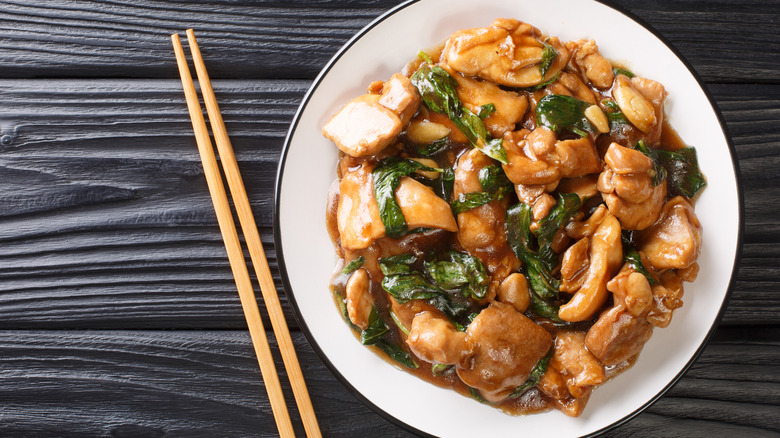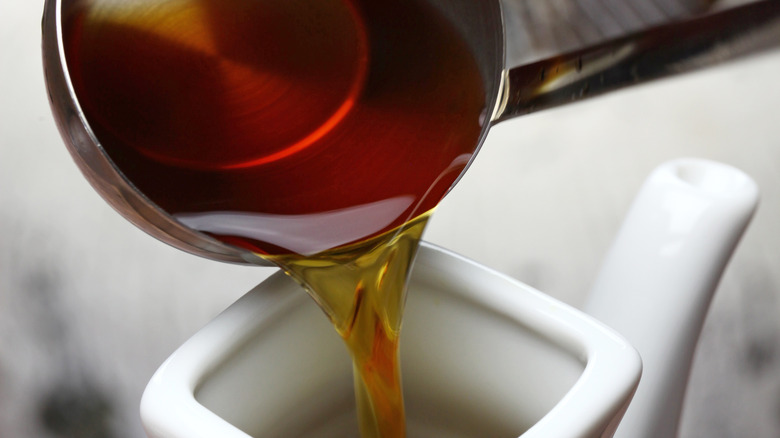What Is Shaoxing Wine And How Do You Use It?
Every culture has certain flavors and ingredients that are associated with it. When folks think about Spanish and Italian food, their mind might float to things like olive oil, garlic, and tomatoes. When folks think of Lebanon and Greece, they think of baklava, gyros, and shawarma. Asian cuisine, like many other cuisines, is as vast as the people that represent it. In Korea, you'll find kimchi and bibimbap, while Japan has things like sushi and sake.
Jump over to China and you will find a plethora of ingredients that while common within their cuisine, may be a bit more uncommon for those not of Chinese origin or descent. For example, Shaoxing wine is one of the most common ingredients found throughout Chinese cooking that is relatively unheard of if you're not Chinese. Shaoxing wine, much like soy sauce, is the one ingredient that takes Chinese cuisine to the next level.
What is Shaoxing wine?
The Woks of Life details how Shaoxing wine is a cooking wine that hails from the city of Shaoxing within the Zhejiang Province in China (a province known for its rice wine production). Shaoxing wine can be traced back to well over 2,000 years ago, and is made through a process of rice water fermentation with the slight addition of wheat (best to steer clear of this if you experience a gluten intolerance or allergy).
But since it is a type of rice wine, does that mean that it looks like all other rice wines? Not really. Shaoxing wine is a clear and amber looking liquid that is somewhat sweet and fragrant. While it has the word "wine" in it, Shaoxing wine doesn't actually taste like alcohol. It tastes more like a vinegary and caramel-like liquid, since it doesn't actually contain very much alcohol. However, people do also consume it as a beverage.
How is Shaoxing wine made and what does it taste like?
Shaoxing wine can be used in pretty much any Chinese dish from Chop Suey to Mongolian Beef to Kung Pao Chicken to Wonton Soup. It is an ingredient that plays a very important role in Chinese cuisine and is oftentimes used in everyday dishes in Chinese homes and restaurants. This rice wine is particularly good for the preparation of protein dishes that include meat and fish that would be either stir-fried or braised. However, a little bit goes a long way and can help eliminate any unpleasant tastes or smells that can come with meats and fish.
But what happens when you've run out of Shaoxing wine and are cooking something that requires something in that vicinity? Try using a product like dry cooking sherry. If you're unable to find that, look at other possible Chinese rice wines or use sake. You can also use mirin (another Japanese cooking wine), but it's important to note that it is much sweeter than Shaoxing wine and would add sugar to the dish. Now, if you're looking for a non-alcoholic substitute, try using chicken, mushroom, or vegetable stock.
Where can you buy it?
You can find Shaoxing wine at your local Chinese grocery store, where they'll normally have several brands in both big and small bottles to choose from. It's wise to get a smaller bottle if you don't plan on using it every day, as it can keep for a long time. Shaoxing wine can keep up to about six months unrefrigerated, but always make sure to look at the expiration date if you're unsure. If you're not planning on refrigerating Shaoxing wine, keeping it sealed tightly (but not so tightly you can't open it later) in a cool and dark place works just fine.
If you'd like to extend the longevity of the rice wine for a bit longer, feel free to refrigerate it. This way if you don't use it every day, it won't lose its fragrant smell as quickly. However, unless it's drinking Shaoxing wine, keeping it in the pantry usually suffices. While rice wine vinegar does not spoil, it is good to note that (like most things) the taste and quality will diminish over time.



